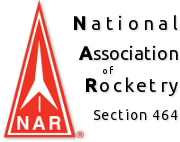This was the 5th year for the Rocketry Unit at the 6th grade of the Dr. John C. Page School in West Newbury. The unit spans several days and starts with a pre-build session after school a few days before the actual build. This year we had eight students stay after school to assemble parachutes, assemble launch bags (motor, igniter, plug, wadding), fill glue bottles, etc. The kids enjoyed it, did a very good job and saved me a lot of work. From the two years we have had the pre-build, I've learned one thing - for whatever job there is to do, put a girl in charge! (Please click on the Read More.. button below for the rest of the article.)
This year the 6th grade has 61 students split into three classes. We group the kids into teams of two and a couple of teams of three, with each class building a different rocket. We have used the Thing-a-ma-jig (FlisKits) and Razor (Custom Rockets) from the start with great success. This year we tried the Alpha (Estes) for the first time. The Alpha was going to be a bit of a challenge. It has standard balsa, surface-mounted fins and all three fins need to be glued on in one 90-minute build session. To accomplish this, I cut fin jigs out of luan some time before. I put one Alpha together myself using the fin jig and it worked well. But having ten teams of 6th graders, with no building experience, use the fin jig was going to be ... who knows! At the midpoint of the building I give a ten-minute (very basic) lesson on rocketry, thrust, combustion, etc. After school, I stay and inspect the rockets and correct any glaring mistakes and re-glue things if needed. The fin jig actually worked pretty well. Eight out of ten Alphas had all three fins mounted straight and only two had the jig glued to the rocket. I was anticipating that this could happen and so I examined the constructed Alphas immediately after class and wiped off as much glue as possible from those two. There was still some glue left but, after the glue had set, I was able to separate the jigs from their respective rockets without any damage.
Launch day is the big day; all the kids are excited and I'm nervous. This year because of weather and school events, launch day wasn't until the following week. It was a bit windy and I was more anxious than I ever was about loosing rockets. We have seven proctors for the launch including myself, each with their own set of duties (e.g. RCO, LCO, re-load table, tracking station, etc). We also had a few dozen parents attend which was nice. There was going to be two launches per team, the first launch with an A8-3 (parachute recovery) and the second with a B6-4 (streamer recovery). The kids prepped their rockets for the first flight in class and then we head down to the field. For the first launch, the teams have numbered Launch Cards. Once all of the teams have completed their first launch, the second set of launches begins. These are not numbered - when a team has prepped their rocket for their second launch, they head to the LCO. For each launch, the kids recorded their tangent angle using and Estes Altitrak and timed their flights with a stopwatch at a station 200 ft from the launch pad, with the Math teacher there to help. Using those two measurements, the kids calculated their flight altitudes and average speed in ft/sec and mph.
As it happened the first two launches of the day were Alpha's. Both went very high and both landed way off field in tall trees. This was not a good omen! I told the rest of the Alpha teams to switch their parachutes for steamers. But kept the Razors and Thing-a-ma-jigs with parachutes, as I knew they wouldn't travel nearly as high. This worked. We ended up loosing only six rockets total and I was able to recover four the next day. I had brought with me several extra built Razors, Thing-a-ma-jigs, and Alphas. Any team that lost a rocket on the first launch took one of the extra rockets of the same kind for their second launch. The second launch was with a B6-4, which was a big hit - especially the Alpha! It really does travel and I've never heard so many 'Wow's' from a B motor before! After all of the teams completed their second launch, we had a few fun launches. We had six teams prep their rockets again and launch all six simultaneously - that is always a crowd pleaser! I launched my Cork Screw, Frick-N-Frack and the 'Streaming UFFO'. This year I used an E12-0 motor and green and white streamers (Page School colors). However, the UFFO was not a good flight. It was a little too windy that day; the UFFO made it to about 30 ft before arching over. But everyone still loved it!
The Principal was there with his ever-present camera. He really enjoys this and is great for PR. We got a lot of good feedback from parents and of course, the kids loved it. John allows those students who really want their rocket to keep them. This year all the rockets were taken and some of the extra's as well - a first! Hopefully, I've recruited a few kids and we'll start seeing them at CMASS launches. I have the summer off, then in September we meet to start planning next year's unit!


